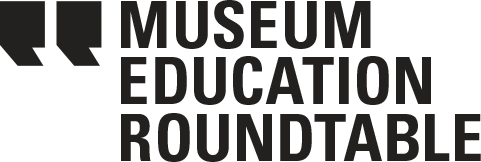Online Learning JME Articles Available Now with Free Access

I am quick to admit that I can be resistant to putting myself, program participants, or students in front of a screen. And while this anti-screen attitude is becoming all the more palpable as I nurse a hangover from hours of back-to-back videoconferencing, I also am becoming humbly aware of how the screen is my main portal right now to the “public.” And I’m not sure it’s even sinking in that as shelter in place orders begin being lifted and museums begin to open again…online learning will continue to be a regular part of my new norm.
Thankfully, others have been exploring, researching, and writing about online learning for years. The Journal of Museum Education (JME) has had two issues in the past decade that are particularly helpful as we all attempt to level up in our deployment of digital teaching strategies–issue 40.2, Distance Learning and Museums in 2015 and issue 44.3, Virtual Visits: Beaming in Live in 2019.
Our publisher, Taylor & Francis, has made three articles from these issues open access so that MER’s community, both members and other forms of supporters, can enjoy these resources for free. Whether you’re one of the thousands who have been furloughed or laid off or you still retain employment as a museum educator, it is our hope that these articles provide inspiration and contribute to the ability for you to leverage your invaluable skills (Side note: check out our #DearMuseums project if you want to contribute a reflection to our ongoing archive of museum educators’ raw experiences during COVID-19).
The three articles in this special open access package include “Pedagogy and Practice in Museum Online Learning” by Hermina Din, “Defining Interactive Virtual Learning in Museum Education: A Shared Perspective” by Kasey Gaylord-Opalewski and Lynda O’Leary, and “Don’t Lose the Connection: Virtual Visits for Older Adults” by Dale Hilton, Arielle Levine, and Janet Zanetis. All three do a wonderful job of providing context to the deep history (relative to the internet) of projects, providing case studies and data. They also break down the helpful distinctions of synchronous (all participants are online simultaneously) and asynchronous (participants are online at different, self-guided times) programs. Din, in particular, reminds us that although these online spaces prove challenging to assess active engagement, they broaden levels of access for people who otherwise might not be able to visit the museum.
Online, everywhere is local. Gaylord-Opalewski and O’Leary’s data-rich article reminded me that interactive virtual learning (IVL) programs are globally accessible, making small museums and big museums around the world truly become neighbors. And as scores of online content is being produced and published at a staggering pace in the last few months (as MCN’s roundup shows), how can I pace myself to make content stretch and be strategic with what I add to the conversation? The authors provide findings from a wide-reaching study on IVLs, sharing tips on crafting curriculum and programs for online teaching, as well as pro tips on how to build patience and confidence for your delivery of them.
It is true that now is a critical time to fight to protect our connection with and service to K-12 classrooms, as MER’s own Stephanie Downey recently wrote in ArtMuseumTeaching. But what other vulnerable communities need our advocacy, attention, and creative adaptive powers right now? In “Don’t Lose the Connection: Virtual Visits for Older Adults,” the benefit of virtual museum visits to older, vulnerable populations is not only empirically valuable, but also of crucial importance when it comes to providing access that otherwise is impossible. Even as museums prepare to re-open their building, we must consider our responsibility to provide people who are at high risk of infection and won’t be as able to physically engage with museum staff and/or environments. And it turns out that when it comes to online learning, older adults learn very similarly to kids–they want active participation and rich content delivered by kind, engaging educators!
These articles brought to my attention the ways in which online learning environments exemplify that which I deem to be the central tenet of museums and my work as a museum educator: To provide a portal for people to exchange, make connections, and share stories and experiences. How will our teaching and program design change for the better as a result of the necessity to lean in to online environments? As Elizabeth Merritt (who recently contributed to our blog) shares on AAM’s Center for the Future of Museums blog, we can sustain ourselves through this crisis by being connected. No matter how the crisis has affected you, we at MER hope you know we are thinking about you and hope our small gesture of sharing these articles provides a connection. We need it too.
Michelle Dezember is the Director of Learning and Engagement at CAM St. Louis and serves on the Board of Directors for the Museum Education Roundtable.

